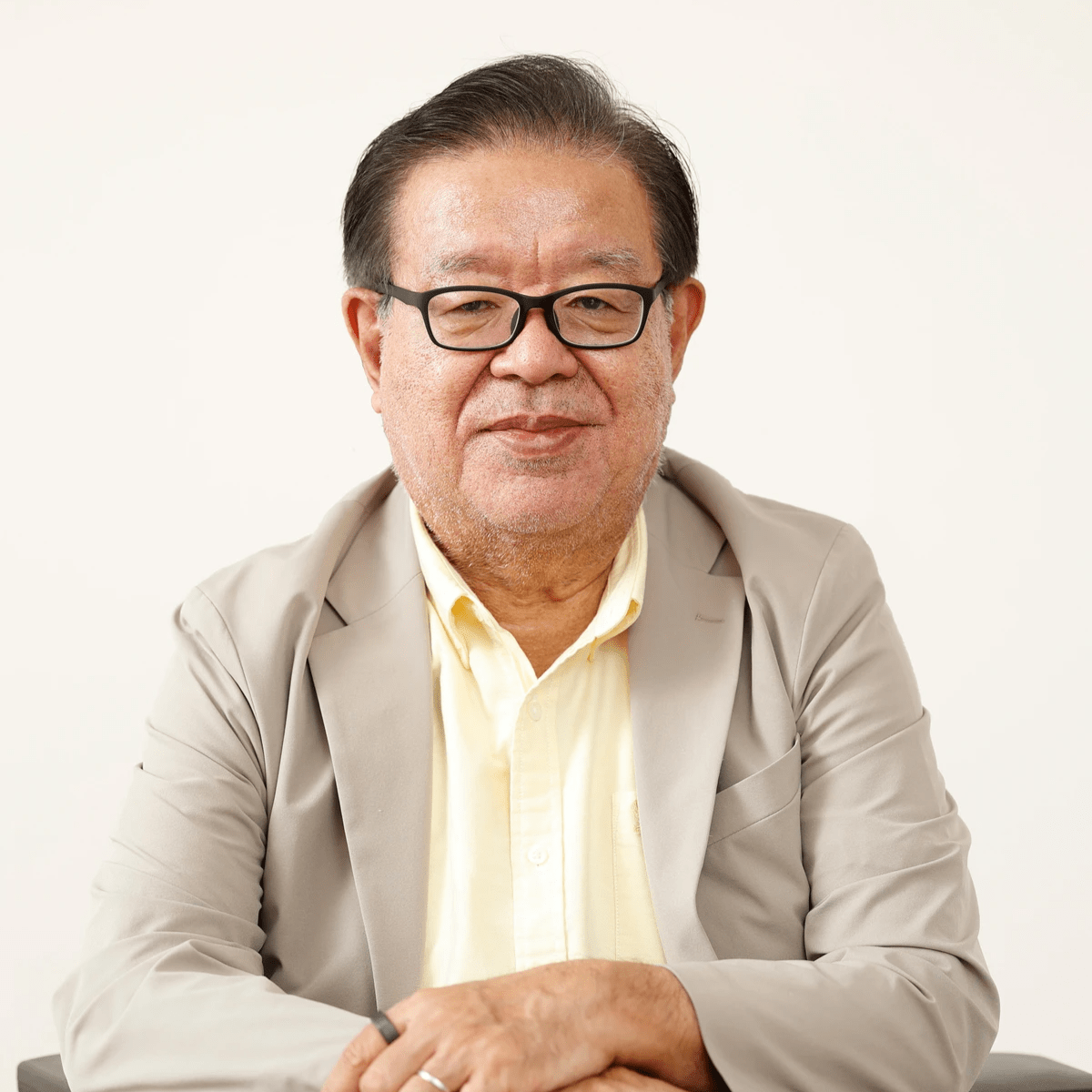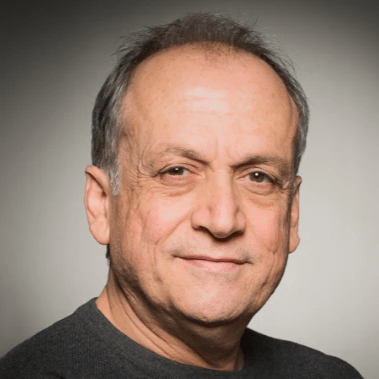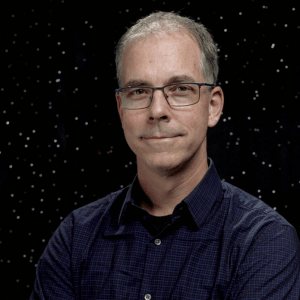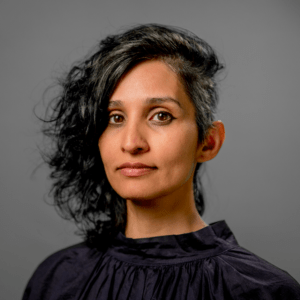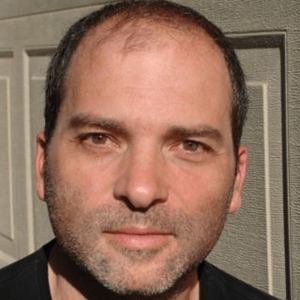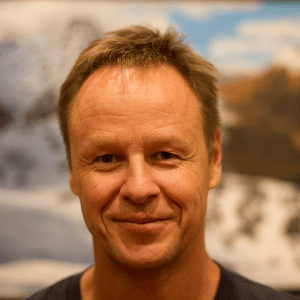

Jun Murai
Distinguished Professor, Keio University
Founder, WIDE Project
Also known as ‘The Father of Internet in Japan’Keynote Topic:
Internet Civilization: A New Frontier for Humankind
About Jun Murai
Jun Murai received his Ph.D. in Computer Science, Keio University in 1987, majoring in Computer Science, the Internet, and Computer Communication. He established JUNET, the first network in Japan connecting multiple universities, in 1984. In 1988, he also established the WIDE Project, a Japanese Internet research consortium. He has long been engaged in research related to Internet technology platforms and is known as ‘The Father of the Internet in Japan’ and in international circles as the Internet Samurai.
He is a Special Advisor to the Japanese Cabinet and an Advisor to the Digital Agency which supports many other governmental committees and is active in numerous international scientific associations.
He was inducted into the 2011 IEEE Internet Award / the 2013 Internet Hall of Fame (Pioneer) / 2019 the Knight of the Legion of Honor by the French Government.
Read the latest blog on Jun Murai here.

Joe Letteri
Senior Visual Effects Supervisor, Wētā FX
Keynote Topic:
"Innovation & Avatar: The Way of Water"
About Joe Letteri
Joe Letteri’s pioneering work as Senior Visual Effects Supervisor, Wētā FX, has earned him five Academy® Awards for Best Visual Effects — most recently for “Avatar: The Way of Water” following earlier wins for “Avatar,” “The Lord of the Rings: The Two Towers,” “The Lord of the Rings: The Return of the King,” and “King Kong.”He has a long-standing interest in creating compelling, realistic creatures and characters — from the Na’vi to Gollum, Alita, and Caesar. Joe has developed many techniques that have become industry standards for creating photorealistic digital effects. This includes co-developing the subsurface scattering technique that brought Gollum to life (winning an Academy® Technical Achievement Award) and pushing the development of large-scale virtual production.
Under Joe’s leadership, Wētā FX has continued to expand and improve these techniques through films like “The Hobbit” and “The Planet of the Apes” trilogies. Joe is currently working on the upcoming “Avatar” sequels and continues to drive the advancement of Wētā’s technological and artistic innovations.
SIGGRAPH Asia 2023 Featured Session Speakers
To interview the featured session peakers of SIGGRAPH Asia 2023, email us.

Paul Debevec
Featured Session Speaker
Chief Research Officer, Eyeline Studios Powered by Netflix, USA
Featured Session Topic: From Virtual Cinematography to Virtual Production
Paul Debevec received degrees in Computer Engineering and Mathematics from the University of Michigan, Ann Arbor in 1992 and a Ph.D. in Computer Science from the University of California, Berkeley in 1996.
He is the Chief Research Officer at Netflix’s Eyeline Studios, an Adjunct Research Professor at the University of Southern California, and a Governor of the Visual Effects Branch of the Academy of Motion Pictures Arts and Sciences as well as a co-chair of the Academy's Sci-Tech Council.
Paul's work in technology for visual effects and virtual production has been recognized with two Academy Awards for Scientific and Technical Achievement, the Progress Medal from the Society of Motion Picture and Television Engineers, and in 2022, the Charles F. Jenkins Lifetime Achievement Emmy Award.

Rob Bredow
Featured Session Speaker
SVP, Chief Creative OfficerIndustrial Light & Magic
USA
Featured Session Topic: Technology: Creative Design at Industrial Light & Magic
Rob Bredow is an Academy Award-nominated VFX Supervisor who serves as SVP, Chief Creative Officer of Industrial Light & Magic. Bredow has a particular focus on the creative strategy for the storied visual effects company where he is responsible for the company’s overall creative teams, innovation, and business development.
Rob also serves in the role of SVP, Creative Innovation for Lucasfilm. Some of Bredow’s previous projects include Solo: A Star Wars Story, ILMxLAB’s story-based virtual reality experiment Trials on Tatooine, and films dating back to Independence Day.

Mark Pesce
Featured Session Speaker
Honorary Associate, Media and Communications, University of Sydney
Australia
Featured Session Topic: The Next Tools
Across a more than forty years in technology, Mark Pesce has been deeply involved in some of the major transitions points in the modern history of computing. In 1983, working with Dr. Ken Weiss, Pesce prototyped the SecurID card, the first implementation of a now common method of secure access. Pesce went on to develop firmware for the X.25 networks (a packet-switched forerunner of today’s Internet), modems for high-speed leased connections, and at Shiva Corporation developed the software for a series of wide-area networking products praised for their ease of use and reliability.
Following Shiva, Pesce struck out on his own, inspired by Ted Nelson’s Project Xanadu’s vision of a global hypermedia system, and William Gibson’s Neuromancer, with its massively connected and fully visualised ‘cyberspace’. As founder and CEO of Ono-Sendai Corporation, Pesce worked toward realising a consumer-priced networked virtual reality system, along the way inventing the ‘source orientation sensor’ for head mounted displays (US Patent 5526022A), reducing the cost of sensing an object’s orientation in space by a thousand-fold.
After collaborating with Sega on their Virtua VR consumer product, Pesce, working with visionary engineer Tony Parisi, blended real-time 3D with the then-emerging World Wide Web to create the Virtual Reality Modeling Language (VRML), the first standard for 3D media on the Web. Pesce and Parisi spearheaded both community- and standards-building processes that laid the foundations for today’s metaverse, culminating with adoption of VRML as MPEG-4 Interactive Profile (ISO/IEC 14496) in 1998.
Pesce wrote VRML: Browsing and Building Cyberspace - his first book - in 1995, followed by VRML: Flying through the Web in 1997. In 2000, Ballantine Books/Random House published The Playful World: How Technology is Transforming our Imagination. That book uses three children’s toys - the Furby, LEGO Mindstorms and Sony’s Playstation 2 - as launching points to explore how interactive devices shape a child’s imagination of the possible.
Appointed in 1997 as Visiting Professor at the University of Southern California’s School of Cinema-Television, Pesce founded the School’s program in interactive media - still going strong over a quarter of a century later. In 2003, Pesce moved to Sydney to found the program in New and Emerging Media at the Australian Film Television and Radio School (AFTRS), teaching postgraduate creatives how to make the most of the transition to digital production, distribution, and promotion.
In Australia, Pesce’s work took a new direction, as he analyzed the sociological and political impacts of newly emerging knowledge-sharing and social networks, topics he explored in detail in two more books: Hyperpolitics: Power on a Connected Planet, published in 2009, and The Next Billion Seconds, published in 2011. During this time,The Australian Broadcasting Corporation featured Pesce on their long-running hit series The New Inventors. For seven years from 2005, Pesce appeared on Australian television screens every Wednesday evening, celebrating the best Australian inventions and their inventors.
During the run of The New Inventors, Pesce entered into a career as a public speaker that continues to this day, addressing audiences around the world on topics such as the future of education, finance, computing, energy, media and much else besides. A regular fixture on Australian television, he also writes a monthly column for The Register - possibly the most respected publication in IT - and another for COSMOS Magazine, the leading science publication in Australia. Pesce also helms two podcasts: The award-winning 'The Next Billion Seconds' and 'This Week in Startups Australia’. With VRML co-inventor Tony Parisi, recently released the highly-praised, award-nominated series “A Brief History of the Metaverse”.
Published by Polity Press in 2001, Pesce’s previous book, Augmented Reality: Unboxing Tech’s Next Big Thing, critiques the design and implementation of augmented reality systems, questioning whether these hypothecated devices truly serve their users - or simply stream valuable data back to their manufacturers.
Rob Coleman
Featured Session Speaker / Computer Animation Festival Co-Chair
Creative Director, Industrial Light & Magic, Australia
Featured Session Topic: The Craft of Character Story Telling in an Age of High-tech Tools Panel
Rob Coleman is the Creative Director at Industrial Light & Magic (Sydney). He is a two-time Oscar nominee for his animation work on Star Wars: The Phantom Menace (1999) and Stars Wars: Attack of the Clones (2002). He has also been nominated for two BAFTA Awards for his work on Men In Black (1997) and The Phantom Menace (1999). He has supervised animation teams in Canada, the United States, Singapore and Australia. He was the Head of Animation on The LEGO Movie (2014) and Peter Rabbit 2: The Runaway (2021), the Animation Supervisor on The LEGO Batman Movie (2017) and the Animation Director on Peter Rabbit (2018).

Raqi Syed
Featured Session Speaker
Senior Lecturer, Victoria University of Wellington
New Zealand
Featured Session Topic: The Craft of Character Story Telling in an Age of High-tech Tools Panel
Raqi Syed is a writer, director, and visual effects designer. She began her career as a Lighting Artist at Disney for films like Meet The Robinsons and Tangled. She went on to work as a Senior Technical Director at Wētā FX, on many films including Avatar and The Hobbit Trilogy.
An advocate for an anti-racist aesthetics in visual effects, Raqi was recognized by The Los Angeles Times in 2017 as one of “100 Industry professionals who can help fix Hollywood’s Diversity Problem.” Her writings span film technology, gender, and visual effects history. Her VR experience, Minimum Mass, won the Cristal in 2020 for Best VR at Annecy Film Festival, and her essays have been featured in publications like Slate, TechCrunch, and Vice.
Raqi is a Sundance New Frontier Story Lab Fellow and a 2020 Ucross Fellow. In the Spring of 2023 she was a Resident at the Annecy Film Festival Animation Residency. Currently an Envoy for the 2022-2023 US State Department American Film Showcase, Raqi holds an MFA from the USC School of Cinematic Arts, and an MA in Creative Writing from Victoria University of Wellington.
Emily Dean
Director,
Blur Studio & Nexus Studios
Featured Session Topic: The Craft of Character Story Telling in an Age of High-tech Tools Panel
Emily Dean is a Los Angeles based Asian-Australian filmmaker who recently directed the episode THE VERY PULSE OF THE MACHINE for Volume 3 of the Emmy-award winning Netflix animated series LOVE, DEATH + ROBOTS.
Emily has worked as a story artist on THE LEGO BATMAN MOVIE for Animal Logic / Warner Bros, and THE LEGO MOVIE 2: THE SECOND PART and SCOOB for Warner Bros. Emily also served as visual consultant on Lionsgate’s live action sci fi thriller, HOTEL ARTEMIS, and story artist on Sony’s Oscar winning animated short film HAIR LOVE.
Emily’s independent animated short film FORGET ME NOT, which was inspired by her family’s experience with Alzheimer’s disease, was nominated for an Australian Academy of Cinema and Television Arts (AACTA) award in 2012. In 2019 Emily was selected as one of Variety Magazine’s ‘Top 10 Animators To Watch’ and in 2021 she was named one of Piaget’s ‘Extraordinary Women’. Her live action sci fi short film ANDROMEDA was awarded at several genre film festivals and is now available to stream on Dust. In 2023 Emily won the Annie Award for Best Storyboarding TV/Media in 2023 for her work on THE VERY PULSE OF THE MACHINE for LOVE, DEATH + ROBOTS, Vol. 3.
Emily writes, directs and executive produces content for film, television, and comics under her production banner, Grade 8 Productions. Emily is currently a director working with Blur Studios and Nexus Studios.

Sabine Laimer
Featured Session Speaker
Sequence VFX Supervisor, Wētā FX, New Zealand
Featured Session Topic: The Craft of Character Story Telling in an Age of High-tech Tools Panel
Sabine Laimer has worked as a Digital Compositor and Compositing Supervisor at Wētā FX since 2012 and has recently taken on responsibility as a Sequence VFX Supervisor. She leads a cross-departmental team of artists and oversees all creative and technical aspects of one or more sequences of a show, creating images that are in line with a client’s vision and works closely with the overall VFX supervisor and production team. More recently, Sabine has wrapped on a soon to be released project in which she took on the role of VFX Supervisor.
Originally from Upper Austria, Sabine’s inspiration to get into VFX was watching DVD extras from The Lord of the Rings Limited Edition box sets.
Her early projects include Man of Steel, Iron Man 3, and The Hobbit: The Desolation of Smaug. Recently, Sabine was the Compositing Supervisor for Marvel Studio’s Shang-Chi and the Legend of the Ten Rings.
Prior to Weta Digital, Sabine worked for various visual effects studios across Germany, Australia, Canada, and the UK, including Scanline VFX Munich, and Double Negative London where she worked on the Harry Potter franchise. Since joining Wētā, Sabine has worked on The Hobbit and Planet of the Apes trilogies, as well as The BFG and Avengers: Infinity War (2018) for which her team received a 2019 VES Award for Best Compositing.
Robin Hollander
Featured Session Speaker
VFX Supervisor, Wētā FX, New Zealand
Featured Session Topic: Blood, Guts and Fur: The Visual Effects Behind Cocaine Bear
Robin Hollander joined Wētā FX in 2006 as a compositor on The Water Horse: Legend of the Deep, before transitioning to senior and supervisory compositing roles for The Planet of the Apes and The Hobbit trilogies. Now a VFX Supervisor, Robin recently led Wētā FX’s work on Elizabeth Banks’ Cocaine Bear.
Robin has worked on a number of Wētā’s key projects, including Avatar as Lead Compositor, for which he received an HPA Award and a VES nomination. He received a further VES nomination for The Hobbit: The Desolation of Smaug and won a VES Award for his work on War for the Planet of Apes.
Building on his background in compositing, Robin has been instrumental in creating proprietary tools and workflows that are used across all Wētā FX projects.
Originally hailing from Zurich, Switzerland, Robin began his VFX career at MPC in London, where projects included Troy, Tim Burton’s Charlie and the Chocolate Factory, Harry Potter and the Goblet of Fire, and Sunshine.
Christophe Hery
Featured Session Speaker
Director, Science Research, META
USA
Featured Session Topic: How We View Digital Humans Panel
Christophe Hery joined Reality Labs Research in 2019, leading research on realistic avatars, their appearance, acquisition/capture and reconstruction. Previously, he worked at Pixar, where he held the position of Senior Scientist.
After writing new lighting models and rendering methods for Monsters University and The Blue Umbrella, Christophe headed the light transport research group in the studio. Christophe’s work there included Finding Dory, Coco and Toy Story 4. An alumnus of Industrial Light & Magic, Christophe previously served as a research and development lead, supporting the facility’s shaders and providing rendering guidance.
He was first hired by ILM in 1993 as a senior technical director. During his career at ILM, he received two Technical Achievement Awards from the Academy of Motion Pictures Arts and Sciences, for techniques related to skin rendering and global illumination.

Mark Sagar
Co-Founder and Chief Scientific Officer,
Soul Machines
Featured Session Topic: How We View Digital Humans Panel
Double Academy Award winner Dr. Mark Sagar is the CEO and co-founder of Soul Machines and Director of the Laboratory for Animate Technologies at the Auckland Bioengineering Institute. He has a Ph.D. in bioengineering and previously worked as the Special Projects Supervisor at Weta Digital and Sony Pictures Imageworks and developed technology for the digital characters in blockbusters such as Avatar, King Kong, and Spiderman 2. His pioneering work in computer-generated faces was recognised with two consecutive Scientific and Engineering Oscars in 2010 and 2011, and Mark was elected as a Fellow of the Royal Society of New Zealand in 2019 in recognition of his world-leading research.
©2025 Koelnmesse Pte. Ltd.


